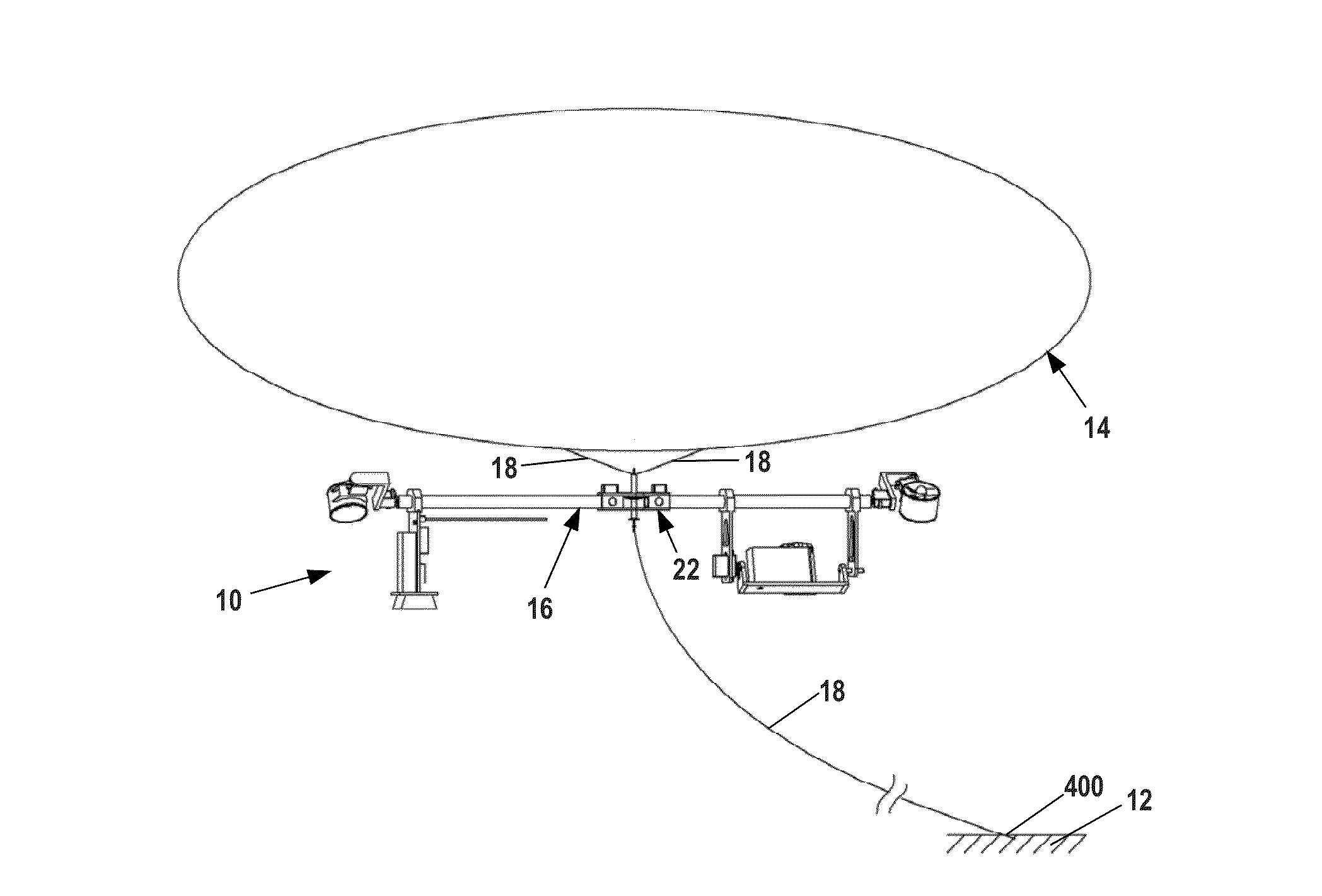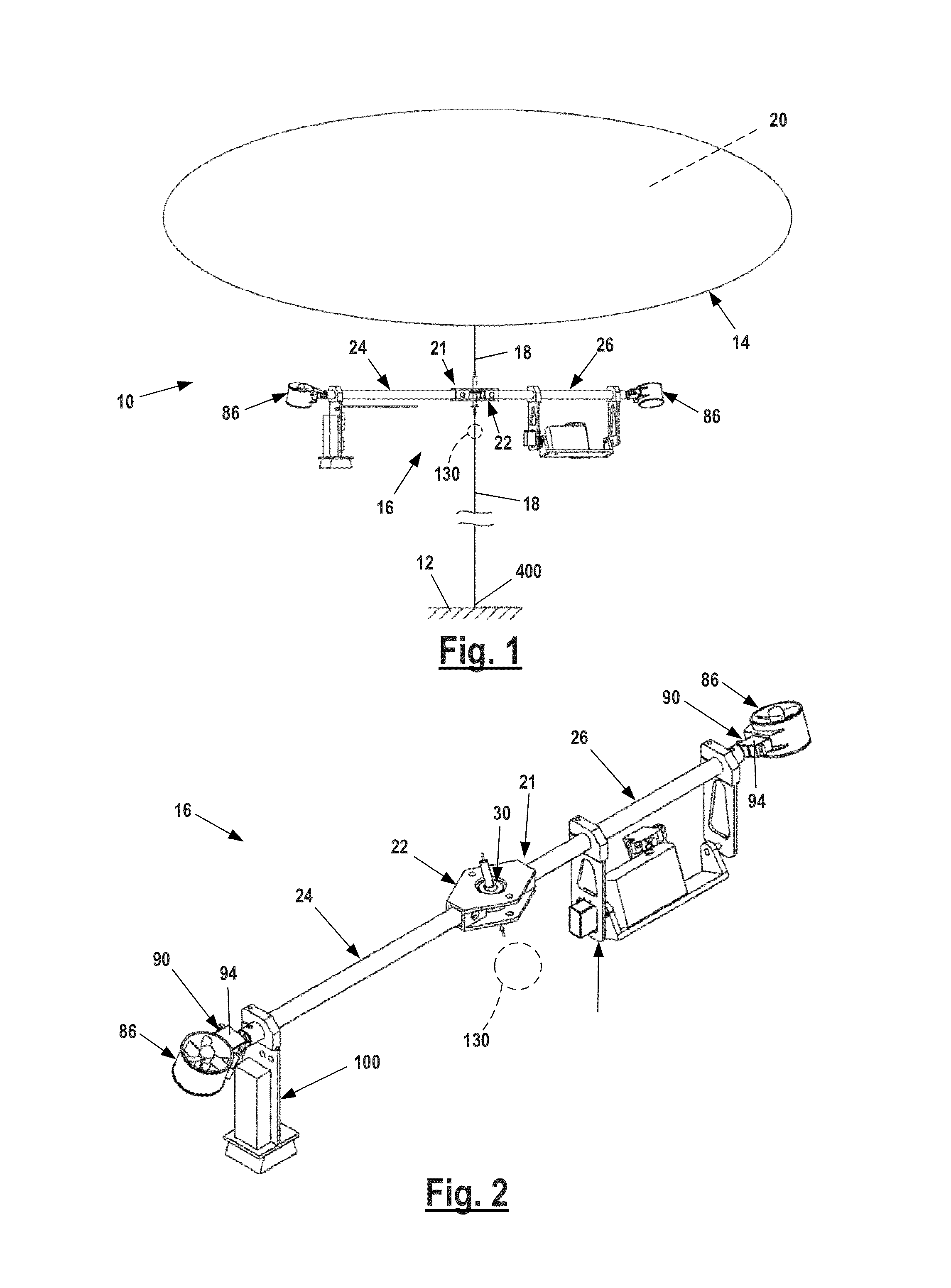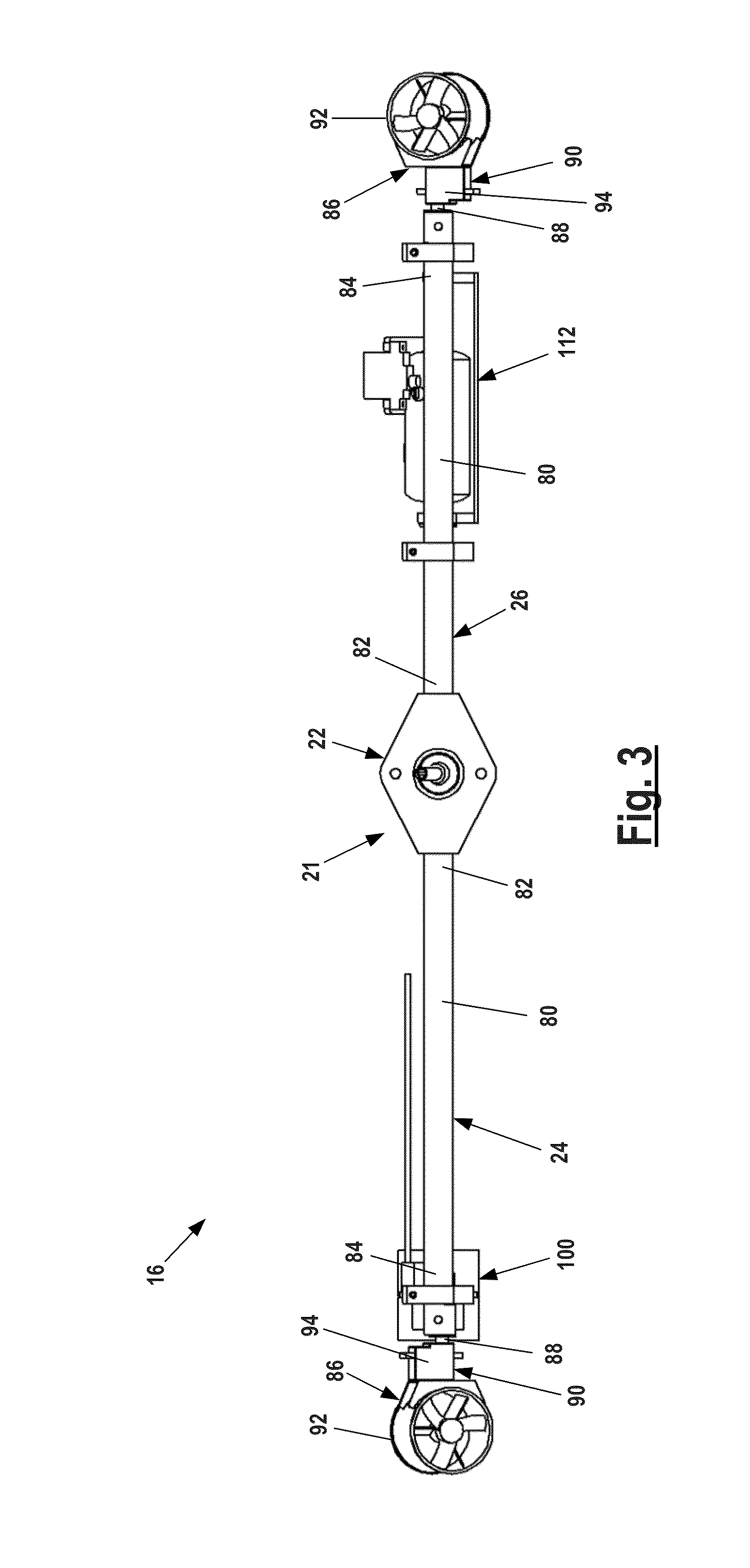Aerostat assembly
a technology of aerostats and components, applied in the direction of lighter-than-air aircraft, instruments, transportation and packaging, etc., can solve the problems of difficult positioning of cameras to maintain picture frames, difficult use of aerostats for aerial photography and surveillance, and little operator control, so as to achieve low energy requirements, easy transportation, and minimal vibration
- Summary
- Abstract
- Description
- Claims
- Application Information
AI Technical Summary
Benefits of technology
Problems solved by technology
Method used
Image
Examples
first embodiment
[0037]FIG. 1 is a perspective view of a first embodiment aerostat assembly 10 tethered to ground 12.
[0038]Assembly 10 is made up of an aerostat balloon 14 jointed to a frame assembly 16 by a tether line 18. Frame assembly 16 hangs freely under balloon 14 and is supported by tether line 18.
[0039]The tether line 18 joining frame assembly 16 to aerostat balloon 14 may be a length of flexible conventional cord or line used to tether aerostat assemblies or may be a short linkage made of metal or other study, inflexible material. If desired, the tether line 18 joining the frame assembly 16 to aerostat balloon 14 may include multiple lines 18 as shown in FIG. 14.
[0040]Aerostat balloon 14 may be any conventionally known balloon used for moored balloons, blimps or other free flying airships. Balloon 14 is filled with a buoyant, lighter-than-air gas 20 that provides lift to assembly 10. If desired, balloon 14 may be a kite-type aerostat that provides aerodynamic lift though an oblate body sha...
second embodiment
[0081]FIGS. 17-22 illustrates a second embodiment aerostat assembly 200.
[0082]Assembly 200 is generally similar to above described assembly 10, made up of an aerostat balloon jointed to a frame assembly 210 by a tether line 212, like tether line 18 described above. Frame assembly 210 hangs freely under the balloon and is supported by tether line 212.
[0083]As shown in FIGS. 17-22 second embodiment aerostat assembly 200 frame assembly 210 has a center support 214 joined to polygonal frame 216 by a number of spars 218.
[0084]Center support 214 is made up of a support plate 220 and pivot assembly 222. Pivot assembly 222 is mounted to plate 220 by a number of fasteners 224. Pivot assembly 222 may be identical to pivot assembly 30 as described above and have a gimbal assembly 226 like gimbal assembly 48. Center support 214 engages tether line 212 in a manner similar or identical to tether line 18 engaging pivot assembly 30 as described above. Support plate 220 has a number of downwardly-ex...
PUM
 Login to View More
Login to View More Abstract
Description
Claims
Application Information
 Login to View More
Login to View More - R&D
- Intellectual Property
- Life Sciences
- Materials
- Tech Scout
- Unparalleled Data Quality
- Higher Quality Content
- 60% Fewer Hallucinations
Browse by: Latest US Patents, China's latest patents, Technical Efficacy Thesaurus, Application Domain, Technology Topic, Popular Technical Reports.
© 2025 PatSnap. All rights reserved.Legal|Privacy policy|Modern Slavery Act Transparency Statement|Sitemap|About US| Contact US: help@patsnap.com



